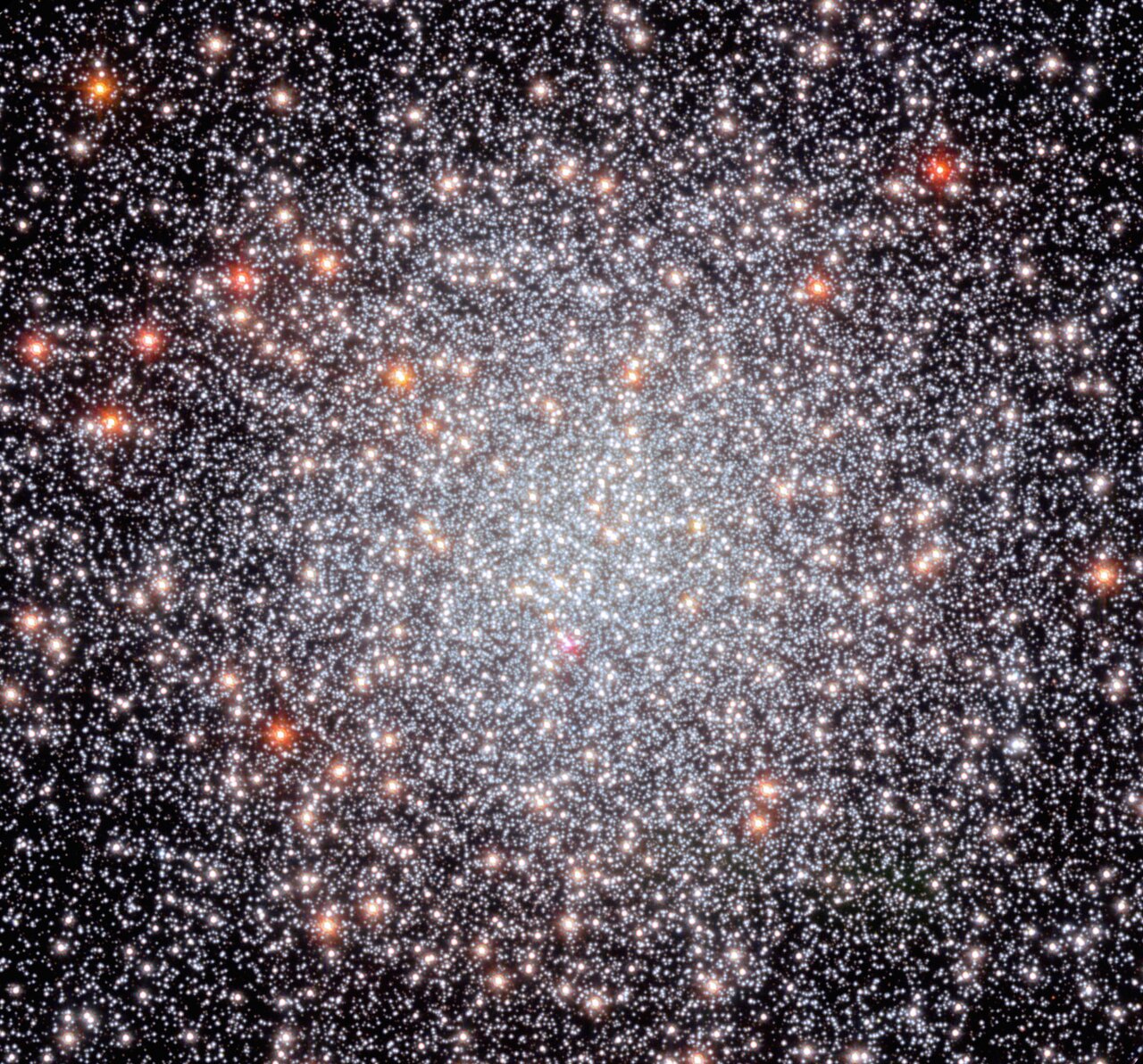About the Object
| Name: | NGC 6440 | |
|---|---|---|
| Distance: |
28000 light years | |
| Constellation: | Sagittarius | |
| Category: | Stars | |
Coordinates
| Position (RA): | 17 48 52.83 |
|---|---|
| Position (Dec): | -20° 21' 38.79" |
| Field of view: | 0.96 x 0.90 arcminutes |
| Orientation: | North is 267.6° left of vertical |
Colours & filters
| Band | Wavelength | Telescope |
|---|---|---|
|
Optical
V | 606 nm | Hubble Space Telescope WFC3 |
|
Optical
I | 814 nm | Hubble Space Telescope WFC3 |
|
Infrared
H | 1.6 μm | Hubble Space Telescope WFC3 |
Hubble’s view of NGC 6440
The stars of globular cluster NGC 6440 shine brightly in this 2022 NASA/ESA Hubble Space Telescope image.
Globular clusters like NGC 6440 are roughly spherical, tightly packed, collections of old stars bound together by gravity. They can be found throughout galaxies, but often live on the outskirts. They hold hundreds of thousands to millions of stars that are on average about one light-year apart, but they can be as close together as the size of our Solar System.
The data used to create this image came from five different Hubble observing programmes, four of which focused on the properties of pulsars. A pulsar is a highly magnetised, rotating neutron star that emits a beam of electromagnetic radiation from its magnetic poles. To us, that beam appears as a short burst or pulse as the star rotates. Pulsars spin extremely fast. Astronomers have clocked the fastest pulsars at more than 716 rotations per second, but a pulsar could theoretically rotate as fast as 1500 rotations per second before slowly losing energy or breaking apart.
Credit:NASA, ESA, C. Pallanca and F. Ferraro (Universita Di Bologna), and M. van Kerkwijk (University of Toronto); Processing: G. Kober (NASA/Catholic University of America)
About the Image
| Id: | potm2404c | |
|---|---|---|
| Type: | Observation | |
| Release date: | 1 May 2024, 10:00 | |
| Size: | 1881 x 1752 px | |




